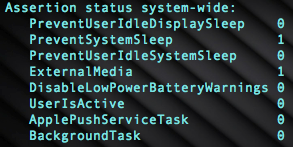iperf3: A Simple and Fast Tool For Network Troubleshooting
 Monday, September 24, 2012 at 3:57PM
Monday, September 24, 2012 at 3:57PM Have you ever had the need to test a network connection's speed? Sure, the "Network Preferences" app says you're connected at 100 Mb, but can you really transfer files between two computers at that speed? Maybe you wonder why a wireless connection seems slower in one room versus another. There are a couple of ways to check things like copying a large file from one machine to another and see how long it takes. Or you could buy an expensive network sniffer that 1) collects and displays way more information than you need or want and 2) can take hours to learn how to use. If you have a couple of Macs and you're not afraid of Terminal, the free utility iperf3 only takes a minute to set up the first time and will test your network throughput in five seconds. If you don't have two Macs or otherwise need a Windows version, you can download one here. Here's how to use iperf3:
- First download iperf3 here. (It's free, but you need to "pay" with a tweet.)
- Second, extract iperf3.zip and copy the iperf3 app to /bin on both Macs.
- On the machine you use as a server, open terminal and type iperf3 -s
- On the client machine open Terminal and type iperf3 -c
The server Terminal screen should look something like this:

The client's should look something like this:

These screenshots were captured from an iperf test with my 27" iMac acting as the server and my 17" MacBook Pro as the client. Both machines were connected to my network via the Gb Ethernet port. In this case I was happy transferring 936 Mbits per second since the theoretical maximum is 1000.
The iperf3 application doesn't use any file transfer or other system-dependent protocols that might throw variability into the test. The server simply spews as much traffic as it possibly can to any iperf3 client that requests it. It is a pure test of any network connection, wired or wireless. I've found it particularly useful for checking wireless throughput in various areas of my house or a client's office. There is so much black magic involved with wireless networking that the Mac's system utilities can't always give you a clear picture of what's happening. You may have experienced times when everything looked good (signal strength, connection speed, etc.) but files transferred slowly or with errors. If iperf3 says you're transferring close to the maximum for your connection, you can pretty much rule out your network as the problem.
I've been using iperf for years because it is tiny (<80KB), simple to use and FREE. It is one tool that goes with me everywhere.






